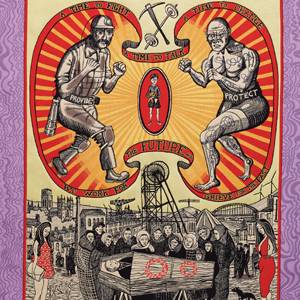
“My Mother died of pneumonia when I was just a kid. My Father kept their wedding cake in the freezer for ten whole years. After the funeral he gave it to the yard man. He tried to act cheerful but he could never be consoled by the little stranger he found in his house. Then one day, hoping to begin a new life away from the scene of all those memories, he moved us from Texas to Fort Dupree, South Dakota.”
Warped familial relationships; thwarted ambition; a muffled, melancholy relationship with the past. It seems that from the initial moments of this first feature, to the blackening credits of his most recent film, Terrence Malick has been ploughing a furrow that is uniquely American (the works of Arthur Miller and Edward Hopper spring to mind), but that is seldom so sensitively handled in American film; that, added to Malick’s borderline obsession with the furniture and foibles of the natural world, result in a body of work that easily locates itself alongside the great art of the 20th century. The Tree of Life has all of these elements in abundance. And yet it doesn’t work.
First of all, it’s worth swiftly passing over Malick’s oft-reported eccentricities – his two-decade sojourn from directing, his Oxford education, his philosophy lecturing in Paris and his translations of Heidegger can all be read about elsewhere. Far more interesting, and pertinent, are some lesser known facts about Malick; his name, for example, can be found on an early draft of the screenplay for Dirty Harry. A little more of Harry, and a little less of The Book of Job might have gone a long way in The Tree of Life.
In this film we are presented, loosely, with the adolescence of Jack, portrayed by , who is the embodiment of scrawn, and who allows his elbows and chin to dangle and jut, preparing themselves to find poise in the body of Sean Penn, into whom he will later grow. His father is Brad Pitt – brusque and perpetually vexed – and his mother is Jessica Chastain, whose muted hair and tones belies a deep resilience; it’s a performance that flits from in and out of the frame. Like the film, she’s both enrapturing and soporific.
Jack follows the same path as many Malick protagonists – from innocence (see Jim Cavaziel’s island isolation at the opening of The Thin Red Line) to persecution (Holly’s father’s interjections in Badlands) to Malick’s seemingly most cherished stage: unspoilt paradise. From Kit and Holly’s woodland treehouse in Badlands (reading the National Geographic and dancing to Mickey and Sylvia’s "Love Is Strange" – almost certainly my favourite sequence, in my favourite film) to Pocahontas and John Smith’s time with her tribe in The New World, and the long summer before the harvest in Days of Heaven. This attainment of wilful ignorance is the deep desire of all of Malick’s protagonists, and where any other filmmaker’s verve would wither in the face of narrative slowdown, Malick somehow entices us into going along with this game. For a few moments we, along with the protagonists, happily forget that there’s a story to be told. Sadly, so does the film.
The Tree of Life includes other Malick paradigms, notably the innocent’s excursion into the rich man’s home. However, the film often feels like the director’s attempt to revel in and explore this state of paradise that, in his other films, is layered alongside other concerns. Sure, we have here the suggestion of death and suicide, and the promise of a vertiginous future of glass and steel (this marks the first time that Malick’s camera has surfaced in the modern world and, I have to say, I like what I see. Or, what he sees), but what grips Malick is this extended period of childhood. And here’s the Dirty Harry problem; look at the plots of Badlands, Days of Heaven, and even The New World. These are melodramas, slowed to a snail’s crawl, so that the doomed lovers can have time to watch the grass grow and the beetles crawl, whilst their lives fall to pieces around them. In his juxtaposition of the genre-story with his notoriously sharp eye for the flow of the everyday, Malick achieves a simple and moving profundity. Kit’s final journey in the aeroplane at the end of Badlands, for example, is so affecting as to make the viewer wonder what long-dead romantic poets would possibly have made of the view from a plane window at sunset.
But what we have in The Tree of Life is the everyday as our major focus. So, where else can Malick’s camera wander, in order to provide any juxtaposition, but to billowing nebulae, and to a rather unconvincing juvenile Parasaurolophus? Malick’s concern has often been the stories occurring on the bank of the river, but the body of The Tree of Life is so firmly situated on that bank that his marginal observations switch places, and become moments of cosmic melodrama.
The result is a film that is, simultaneously, enrapturing, fascinating, blinding and uninvolving, keeping the viewer constantly at arm’s length. I never felt great sympathy for any of the characters, nor their recondite inner monologues (I have, on occasion, been irritated with both of my parents, but I’ve never intoned “Far-ther. Mother. Whaa mus’ you wrestle insade o’ me?”). Rather, I admired performances, and metaphysical conceits. But I never got the sense that Brad Pitt, with a yearning for better times, might keep his wedding cake in the freezer for ten whole years. And I often wished that the camera might drift around to the next block, where we could find a red-haired girl in a too-short skirt twirling her baton on the front lawn, waiting for a James Dean type to drop into her world.

